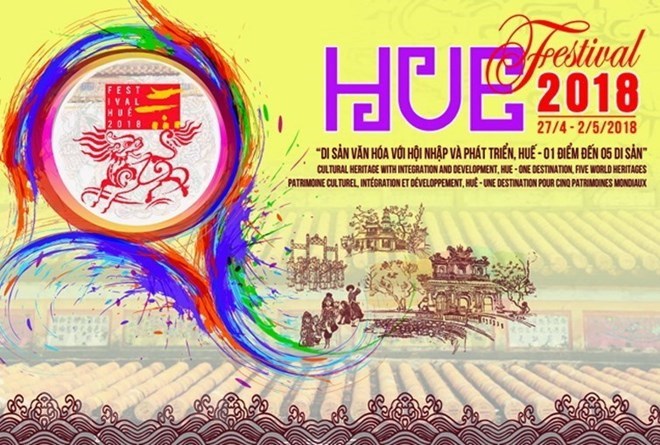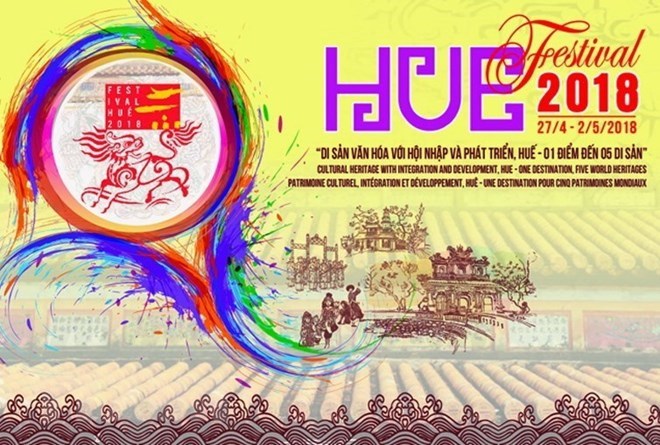



Official poster of Hue Festival 2018 (Source: VNA)
The Monarchic Saga of Hue or Van hien Kinh ky is a unique art
performance that comprises different genres of royal music, dance and poem
singing as well as the modern staging techniques of LED backdrop, light effects
and fireworks.
According to Huynh Tien Dat, deputy director of the Hue Festival Centre, the
event’s organiser, the show will be a key part of this edition of the Hue
Festival.
The Hue Festival is a biennial cultural event taking the first time in 2000. It
gathers art troupes nationwide and from other countries in the former imperial
capital city. This year’s event is the 10th version of the event.
This year’s event, which starts in April 28 and ends on May 2, aims to
highlight the province’s cultural heritage items awarded by UNESCO, including
the Complex of Hue Monuments, Hue royal court music, printing woodblocks, the
royal records of the Nguyen Dynasty (1802-1945) and royal literature on Hue
royal architecture.
"The show depicts the history and achievements of the Nguyen Dynasty in its
143-year history,” said Phan Thanh Hai, director of the Hue Monuments
Conservation Centre. The centre is a local government body managing all relics
related to the dynasty in Hue and is the biggest local partner of Hue Festival
Centre in creating the event.
Hai, also a co-author of the show, said: "It was built in the structure of a
play, telling a historical story of Vietnam in the 19th century through the
royal art form as well as other traditional genres of Hue.”
The development of the monarchy in Hue and the reclamation of the country’s
sovereignty, with a deep focus on sovereignty over Hoang Sa (Paracel)
archipelago, would be conveyed in the show, he said.
The show’s first chapter will include scenes depicting the Vietnam’s
sovereignty over Hoang Sa. The dynasty’s first king, Gia Long, formed marine
troops and appointed them to investigate and measure the archipelagoes during
his reign.
Royal records related to this have been contributed to sources that prove
Vietnam’s definite sovereignty over the archipelagos.
In the first chapter, audiences will enjoy the processes when King Gia Long
built the kingdom and efforts to expand the country to the south.
It will also detail the period that the king named the country Vietnam in 1804.
Audiences will continue to be entertained with light, music, and royal dance in
the second chapter. The stories go on with an era of secure defence, peace and
bumper crops under the reign of the dynasty’s second king, Minh Mang.
Many achievements in the heyday of the Nguyen Dynasty will be included in this.
The last chapter depicts themes that highlight the advanced education and
flowering art thanks to peaceful and wealthy life created by the dynasty. This
will also give audiences a background on the intangible values left by the
dynasty in Hue.
The 80-minute show is expected to tell a full story of imperial Hue in a most
entertaining way and show the dynasty’s role in protecting Vietnam’s
sovereignty over seas and islands as well as the growing of Vietnamese
territories to the south.
Source: VNA